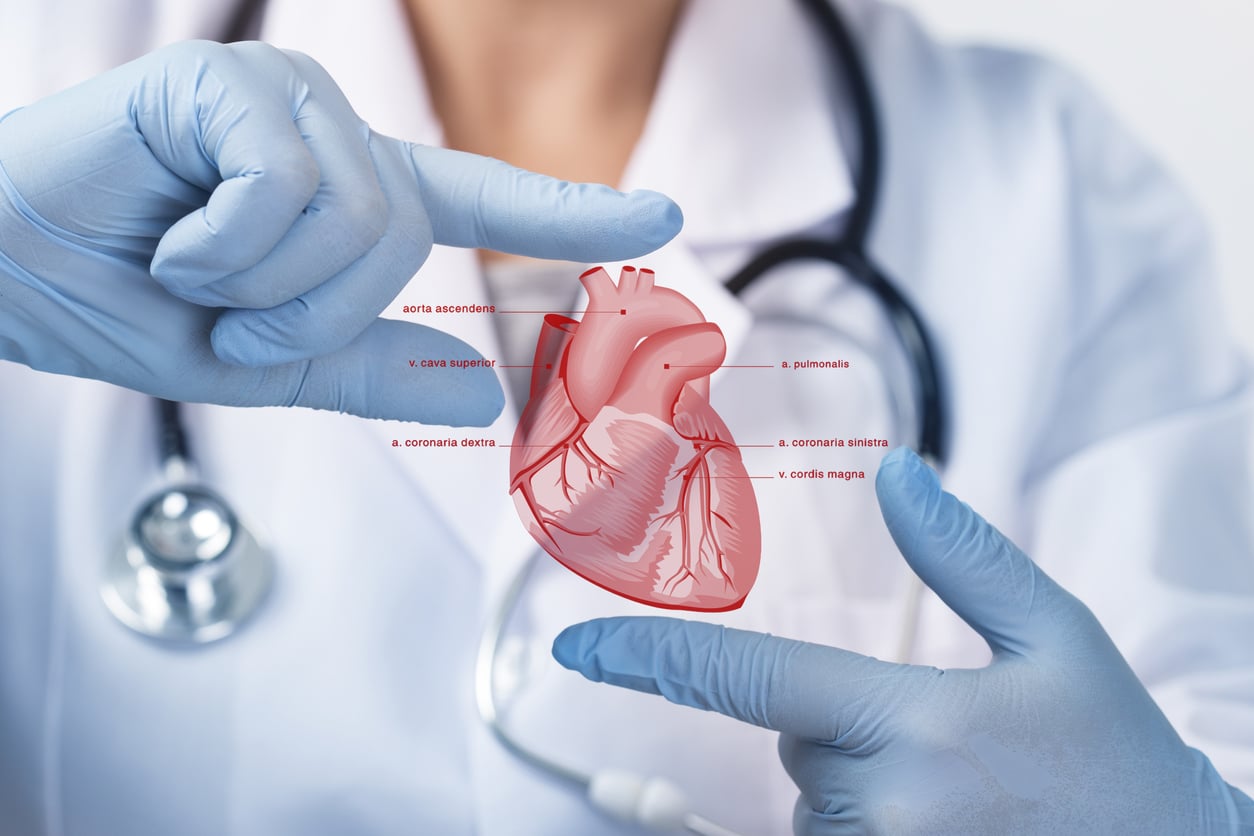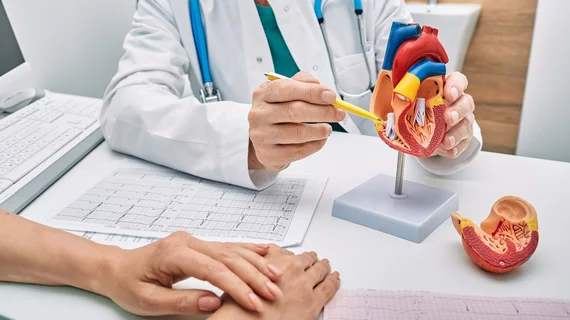Cardiology care for seniors: Specialized heart strategies for aging adults
Cardiology care for seniors: Specialized heart strategies for aging adults
Blog Article
Understanding the Value of Cardiology in Modern Healthcare Providers
Cardiology plays a vital duty in modern healthcare, particularly as heart disease remains to be the leading reason of death worldwide. Developments in diagnostics and treatment have changed patient care, allowing earlier treatments and enhanced results. The shift towards preventive cardiology equips people to handle their health and wellness proactively. As technology continues to evolve, the integration of innovative services might better redefine cardiology's influence on public health and wellness, triggering a more detailed assessment of arising fads and their ramifications.
The Frequency of Cardiovascular Disease and Its Influence On Public Health
Heart condition stays the leading cause of death globally, its influence prolongs far past specific clients to influence public wellness systems and economic climates. The high occurrence of heart problem positions a considerable stress on health care sources, requiring raised funding for prevention, therapy, and recovery programs. Public health and wellness campaigns need to address danger variables such as obesity, smoking cigarettes, and sedentary lifestyles, which add substantially to the climbing occurrence of heart conditions.Moreover, the financial problem connected with heart problem is enormous, encompassing not just direct clinical costs however likewise indirect costs connected to shed efficiency and premature mortality. Communities face difficulties in handling these costs, often resulting in differences in health care gain access to and outcomes. As the population ages and lifestyle-related risks remain to rise, the urgency for reliable cardiology treatments becomes critical. Resolving heart illness is not only an issue of private health however also a critical public wellness priority.
Advances in Heart Diagnostics and Imaging Techniques
Current innovations in cardiac diagnostics and imaging techniques have actually reinvented the field of cardiology, enhancing the capacity to detect and check cardiovascular disease. Strategies such as heart MRI, CT angiography, and echocardiography have actually become progressively innovative, providing in-depth photos of cardiac frameworks and functions. These techniques permit for the early recognition of conditions like coronary artery condition, heart failing, and valvular disorders.Moreover, improvements in non-invasive diagnostics, such as wearable innovation and remote monitoring tools, have encouraged patients and health care companies. These devices promote real-time monitoring of heart rhythms and other necessary indicators, leading to timely treatments. In addition, expert system is being incorporated right into imaging evaluation, improving accuracy and effectiveness in medical diagnosis.
Advancements in Therapy Alternatives for Heart Issues
Current innovations in cardiology have brought about considerable developments in therapy choices for heart disease. These include innovative surgical methods that enhance procedural results and arising medicines that use new avenues for treatment. As the field progresses, these advancements play a crucial function in improving person treatment and outcomes.
Advanced Surgical Techniques
Innovations in medical methods have actually changed the landscape of cardiology, providing brand-new wish for clients with heart disease. Minimally intrusive procedures, such as catheter-based interventions, have substantially minimized recovery times and hospital keeps. Methods like robotic-assisted surgical procedure enhance precision, permitting cosmetic surgeons to navigate intricate anatomical structures with greater accuracy. Additionally, developments in imaging technology facilitate real-time visualization during treatments, enhancing outcomes. Transcatheter aortic shutoff substitute (TAVR) exemplifies an innovation in dealing with aortic constriction, enabling shutoff replacement without open-heart surgical treatment. In addition, hybrid methods that incorporate medical and catheter-based approaches offer customized services for numerous heart problems. These sophisticated medical methods not only enhance person safety and security however also expand treatment alternatives, emphasizing the critical role of advancement in modern cardiology practices.
Emerging Treatments and medicines
As the landscape of cardiology remains to advance, emerging therapies and medicines play a critical function in boosting treatment options for heart disease. Innovations such as novel anticoagulants and progressed lipid-lowering representatives have transformed the monitoring of heart diseases, significantly decreasing individual morbidity and mortality. Furthermore, the development of genetics treatments and regenerative medication provides appealing avenues for treating problems previously considered incurable. Scientific tests are continually disclosing the efficiency of these treatments, pressing the limits of conventional therapies. The integration of electronic health modern technologies promotes customized medicine, allowing for tailored therapy strategies based on genetic and lifestyle factors. Collectively, these improvements highlight the dynamic nature of cardiology, enhancing individual outcomes and redefining standards of treatment in modern-day healthcare.
The Duty of Preventive Cardiology in Person Treatment
Precautionary cardiology plays a necessary role in patient care by focusing on the identification of threat variables that contribute to heart problem. Through way of life modification techniques and very early detection methods, doctor can efficiently lower the incidence of cardio occasions - Dr Garcia. This proactive technique not just enhances patient end results but also advertises long-lasting health
Danger Variable Recognition
While cardio diseases continue to be a leading reason for morbidity and mortality worldwide, reliable danger element recognition functions as a keystone of precautionary cardiology. Recognizing danger elements such as hypertension, hyperlipidemia, diabetes mellitus, and household history is necessary for very early treatment. Health care experts make use of different screening methods to evaluate these elements, permitting customized safety nets. Additionally, recognizing a patient's way of life selections, such as smoking and physical lack of exercise, even more informs danger analyses. This comprehensive examination makes it possible for medical professionals to create personalized care plans targeted at mitigating dangers. By focusing on risk aspect recognition, healthcare systems can improve person end results and lower the total worry of cardio diseases, eventually adding to boosted public health approaches and resource allocation.
Way Of Life Adjustment Strategies
A wide variety of researches highlights the critical function of lifestyle alteration strategies in minimizing heart disease danger. These methods incorporate nutritional changes, enhanced physical activity, cigarette smoking cessation, and weight administration. By taking on a heart-healthy diet regimen abundant in fruits, vegetables, whole grains, and lean proteins, people can lower cholesterol levels and high blood pressure. Normal exercise enhances the heart and improves general cardiovascular health. Furthermore, quitting smoking significantly lowers the risk of heart disease and enhances recovery rates for those with status quo. Weight management further adds to cardio wellness by alleviating various other risk aspects such as diabetes mellitus and hypertension. Implementing these way of living transforms not just advertises private well-being yet additionally offers as a foundation of preventative cardiology in client care.
Very Early Detection Techniques
Lifestyle modifications considerably add to minimizing cardio disease threats, however they are most efficient when coupled with very early detection techniques. Preventive cardiology stresses the relevance of identifying prospective heart issues prior to they intensify right into major problems. Techniques such as blood stress monitoring, cholesterol screening, and progressed imaging modern technologies like echocardiograms play important roles in examining cardiovascular wellness. Biomarkers and hereditary testing additionally enhance the accuracy of early discovery, permitting tailored precautionary strategies. Routine heart danger examinations encourage doctor to pop over to this web-site intervene proactively, potentially preventing heart attacks and strokes (Cardiology). By incorporating these early detection approaches right into regular treatment, patients can gain from timely way of life interventions and targeted treatments, ultimately boosting end results and enhancing lifestyle
Integrating Innovation Into Cardiology Practices
As developments in innovation proceed to improve various areas, the integration of ingenious tools and systems into cardiology techniques has ended up being necessary for boosting individual care and end results. Telemedicine platforms allow cardiologists to check clients from another location, improving access to care while lowering the burden on health care centers. Wearable tools, such as smartwatches, make it possible for continual heart rate monitoring, signaling both doctors and clients to possible concerns in real-time. Additionally, fabricated intelligence (AI) is being utilized to examine substantial amounts of cardiac data, helping in early diagnosis and individualized treatment strategies. Advanced imaging methods, consisting of 3D echocardiography, enhance visualization of heart structures, resulting in much more exact interventions. Digital health documents (EHRs) streamline individual details management, making official site sure that cardiologists have prompt accessibility to crucial information. Together, these technical improvements are transforming cardiology, promoting proactive monitoring and boosted health end results for people with cardio conditions.
The Importance of Individual Education And Learning and Interaction
Individual education and interaction play a crucial duty in the administration of cardio health and wellness. By outfitting individuals with understanding about their conditions, therapy choices, and way of life adjustments, doctor empower people to take an energetic role in their treatment. This proactive approach can lead to improved adherence to prescribed medicines, dietary changes, and exercise regimens, eventually reducing the risk of complications.Engagement also cultivates a solid patient-provider relationship, encouraging open interaction and count on. When patients really feel educated and involved, they are a lot more most likely to voice worries and ask inquiries, which can result in better scientific results. In addition, instructional sources, such as workshops or electronic platforms, can enhance understanding and promote self-management techniques. In general, prioritizing individual education and involvement is crucial for boosting cardio health, enhancing top quality of life, and decreasing health care expenses related to heart diseases.
Future Trends in Cardiology and Their Possible Influence

Often Asked Questions
What Lifestyle Changes Can Decrease Heart Problem Threat?
The existing question addresses way of living modifications that can substantially reduce heart illness danger. Dr Garcia. Embracing a balanced diet regimen, involving in normal physical activity, maintaining a healthy weight, handling tension, and avoiding tobacco can notably boost cardiovascular wellness
Just How Can I Acknowledge Early Indicators of Heart Issues?
Acknowledging early signs of heart issues includes tracking signs such as breast discomfort, shortness of breath, fatigue, and uneven heartbeat. Timely awareness of these signs can motivate essential clinical evaluation and treatment for much better results.
What Are the Distinctions In Between Cardiologists and Heart Surgeons?
The distinctions in between cardiologists and cardiac cosmetic surgeons depend on their functions; cardiologists primarily identify and handle heart problems through non-invasive methods, while cardiac specialists execute surgeries to correct structural heart concerns. Each plays a vital, unique role.

Exactly how Frequently Should I Get My Heart Health Checked?
The regularity of heart checkup differs based on private danger elements. Generally, grownups ought to undergo evaluations each to two years, while those with status quo might need even more frequent assessments as suggested by healthcare professionals.
What Function Does Genetics Play in Cardiovascular Disease Danger?
Genes considerably affects cardiovascular disease danger, with domestic patterns indicating acquired conditions. Particular genetics can incline individuals to high blood pressure, cholesterol concerns, and various other cardiovascular troubles, highlighting the significance of genetic testing in assessing heart wellness. Heart condition stays the leading cause of fatality around the world, its effect prolongs much beyond private patients to impact public health and wellness systems and economic climates. Public health and wellness campaigns have to attend to threat factors such as weight problems, smoking cigarettes, and less active way of livings, which add significantly to the increasing occurrence of heart conditions.Moreover, the economic burden linked with heart disease is enormous, including not just straight clinical prices however also indirect expenses connected to lost efficiency and early mortality. Precautionary cardiology plays an important duty in individual treatment by focusing on the identification of risk aspects that contribute to heart disease. Man-made intelligence (AI) and equipment learning are enhancing diagnostics and individual surveillance, allowing very early discovery of heart illness. The differences between cardiologists and heart doctors lie in their duties; cardiologists largely handle and detect heart problems with non-invasive approaches, while cardiac cosmetic surgeons execute surgical treatments to remedy architectural heart issues.
Report this page